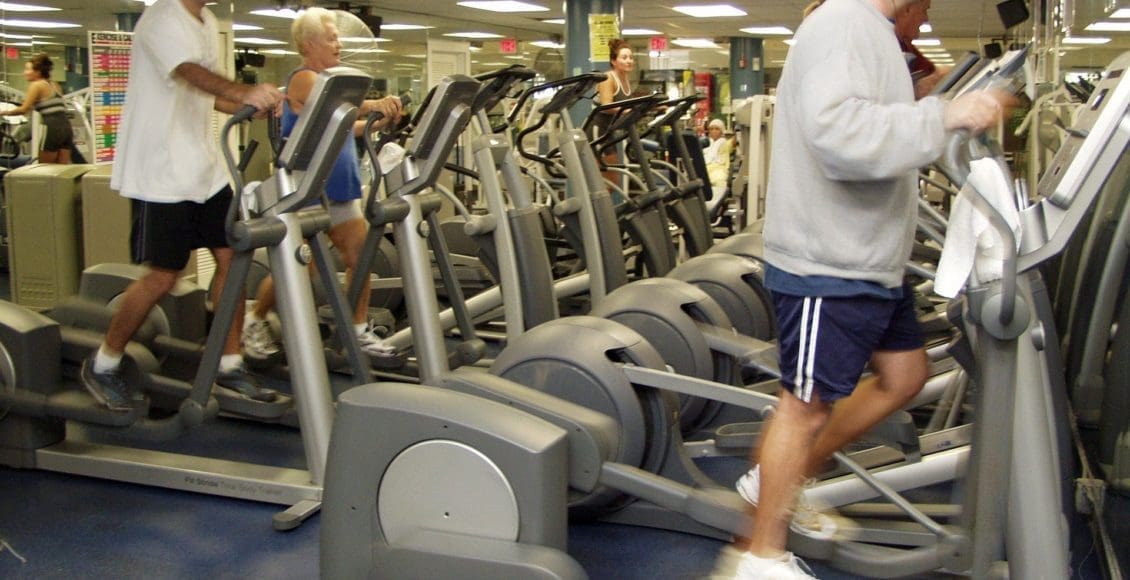There are 3 primary parts of exercise: cardiovascular exercise, strengthening exercises, and flexibility training. And let’s face it—those first 2 typically get more emphasis. Cardiovascular exercise (running, for example—anything which gets your pulse up) and strength training (lifting weights) come with some rather immediate outcomes. They help us build muscle and lose weight , all while helping us be more fit. It takes longer to see those advantages.
But here’s the deal: flexibility becomes more significant as you grow old. Being limber can help battle those aches and pains related to aging; stretching can help you maintain better joint health. It can also make those daily jobs—carrying groceries, going up and down stairs etc. much easier.

However, you can’t wake up when you’re 64 and unexpectedly be equally as adaptable as you were when you were 24. It’s much better and even more efficient to work flexibility training into your workout routine throughout your own life.
(Rest assured: if you are 64 and were hoping to regain some of that youthful flexibility, you can start working it in your workout routine now. Simply be realistic concerning the outcomes. You will, most likely, never be as flexible as you once were, but working on flexibility at any age is rewarding.)
Table of Contents
Talk To Your Physician Or Physical Therapist Before Beginning A New Workout Plan
They could help you establish realistic targets and create a plan that best suits your life. You may want to think about working with a personal trainer to assist you ease into the brand new routine.
Flexibility Training Is More than Doing A Few Stretches
After a run is yes, better than nothing, doing a couple of hamstring stretches, but you won’t find as many long-term gains as you’d see from a flexibility plan that is more developed.
To get the most benefit from flexibility training, you should have a personalized program, one that takes into account your body and demands. As stated earlier, a personal trainer or physical therapist is able to help you develop the best plan for you.
And remember: the more time and attention you give to flexibility training, the more gains you’ll see—especially those long term gains.
Take Your Actions Into Account
Think, also, about your daily life: does your job involve a lot of sitting or lifting?
A personalized flexibility training program is able to help you enhance your freedom (how well your joints move) and stability (keeping good posture and body alignment during actions in order for your body isn’t under undue strain). It can allow you to excel in sports or your activities, in addition to help you take good attention to your body on a daily basis.
Give Special Focus To Muscles That Feel Tight
The shoulders, chest, hamstrings, and hips are often tight, but you may find tightness in other regions depending on harms, pressure in your lifetime, or how rough a particular workout was. By tailoring your flexibility training to your body, you’ll prevent overstretching muscles—or muscles that are lost that need consideration.
Your Body Knows What’s Best for It
Listen to your body, and don’t push it too much when you’re stretching. Instead, ease into a stretch when you’ve reached the limit of what you are able to do at that point, and understand.
Also, you need to prevent ballistic stretches—that sort of extending where you bounce in and out of the stretch. That strategy isn’t as successful holding the stretch for about 10 to 30 seconds and then as slowly stretching your muscles.
You Can Be Creative With Stretching
Within the plan that was developed for you, you can use resistance balls, towels, or other props that’ll allow you to go deeper in your stretches. Assortment will also make you more likely to stay with your flexibility training plan.
Warm Up For Stretching
You may be a bit confused—isn’t stretching a warmup? How do you warm up for stretching? This is where a brisk walk or short jog can help: get your heart pumping and your muscles limber before stretching.
Take A Flexibility Course In The Fitness Center
Assess your gym’s class program; it may be that they have a few flexibility or stretching classes. Sometimes these courses combine cardiovascular work, strength training, and flexibility work—all 3 parts of exercise in one class! Or you may take a class that’s exclusively focused on stretching.
Your Mind Can Stretch
Pilates and yoga are outstanding flexibility training trainings. Plus, they teach you about relaxation, meditation, and other head-body techniques—ways to help calm your body and emotions, which can, subsequently, make your body more receptive to being stretched.
Stretching Is Significant for Everyone
Maybe you’ve got this bogus organization with extending—that only individuals in rehabilitation do it or that it’s only for individuals who aren’t actually in shape (that’s: it’sn’t “real” exercise). Well, it’s time to go past that misconception. Everyone should stretch. Look for inspiration or proof at Olympic and professional athletes: they know that flexibility training is a key section of peak performance.
You Must Be Consistent
It needs to be part of your routine, for stretching to be as effective as possible. This isn’t something which you do for a few weeks and after that move on. Regular stretching and flexibility work—along with cardiovascular exercise and strength training —will assist you to take good care of your own body for years to come.

Post Disclaimer
Professional Scope of Practice *
The information on this blog site is not intended to replace a one-on-one relationship with a qualified healthcare professional or licensed physician and is not medical advice. We encourage you to make healthcare decisions based on your research and partnership with a qualified healthcare professional.
Blog Information & Scope Discussions
Welcome to El Paso's Premier Wellness and Injury Care Clinic & Wellness Blog, where Dr. Alex Jimenez, DC, FNP-C, a board-certified Family Practice Nurse Practitioner (FNP-BC) and Chiropractor (DC), presents insights on how our team is dedicated to holistic healing and personalized care. Our practice aligns with evidence-based treatment protocols inspired by integrative medicine principles, similar to those found on this site and our family practice-based chiromed.com site, focusing on restoring health naturally for patients of all ages.
Our areas of chiropractic practice include Wellness & Nutrition, Chronic Pain, Personal Injury, Auto Accident Care, Work Injuries, Back Injury, Low Back Pain, Neck Pain, Migraine Headaches, Sports Injuries, Severe Sciatica, Scoliosis, Complex Herniated Discs, Fibromyalgia, Chronic Pain, Complex Injuries, Stress Management, Functional Medicine Treatments, and in-scope care protocols.
Our information scope is limited to chiropractic, musculoskeletal, physical medicine, wellness, contributing etiological viscerosomatic disturbances within clinical presentations, associated somato-visceral reflex clinical dynamics, subluxation complexes, sensitive health issues, and functional medicine articles, topics, and discussions.
We provide and present clinical collaboration with specialists from various disciplines. Each specialist is governed by their professional scope of practice and their jurisdiction of licensure. We use functional health & wellness protocols to treat and support care for the injuries or disorders of the musculoskeletal system.
Our videos, posts, topics, subjects, and insights cover clinical matters and issues that relate to and directly or indirectly support our clinical scope of practice.*
Our office has made a reasonable effort to provide supportive citations and has identified relevant research studies that support our posts. We provide copies of supporting research studies available to regulatory boards and the public upon request.
We understand that we cover matters that require an additional explanation of how they may assist in a particular care plan or treatment protocol; therefore, to discuss the subject matter above further, please feel free to ask Dr. Alex Jimenez, DC, APRN, FNP-BC, or contact us at 915-850-0900.
We are here to help you and your family.
Blessings
Dr. Alex Jimenez DC, MSACP, APRN, FNP-BC*, CCST, IFMCP, CFMP, ATN
email: coach@elpasofunctionalmedicine.com
Licensed as a Doctor of Chiropractic (DC) in Texas & New Mexico*
Texas DC License # TX5807
New Mexico DC License # NM-DC2182
Licensed as a Registered Nurse (RN*) in Texas & Multistate
Texas RN License # 1191402
ANCC FNP-BC: Board Certified Nurse Practitioner*
Compact Status: Multi-State License: Authorized to Practice in 40 States*
Graduate with Honors: ICHS: MSN-FNP (Family Nurse Practitioner Program)
Degree Granted. Master's in Family Practice MSN Diploma (Cum Laude)
Dr. Alex Jimenez, DC, APRN, FNP-BC*, CFMP, IFMCP, ATN, CCST
My Digital Business Card


